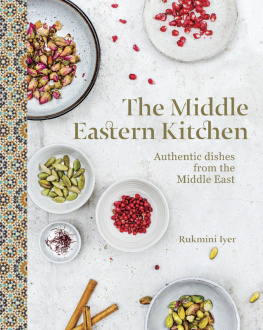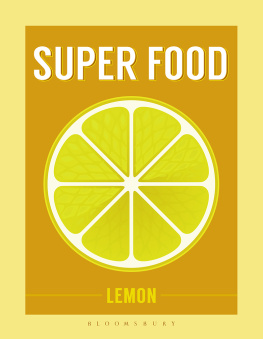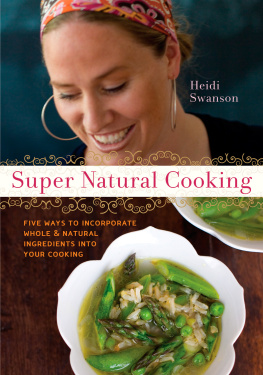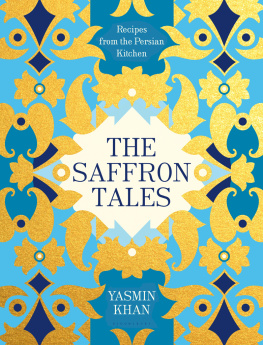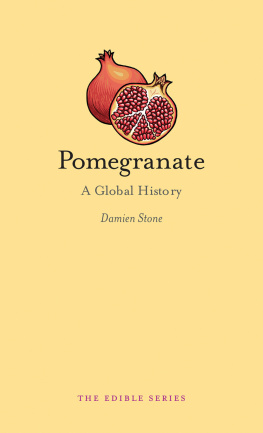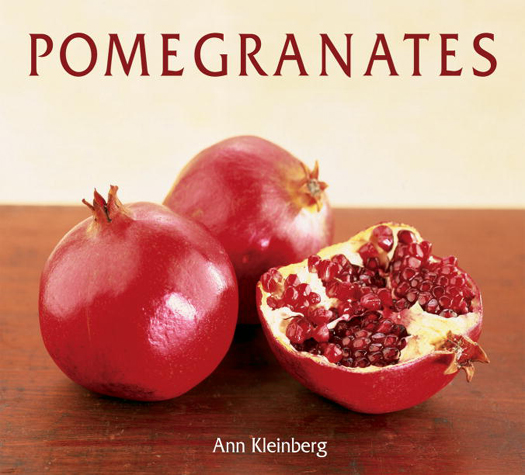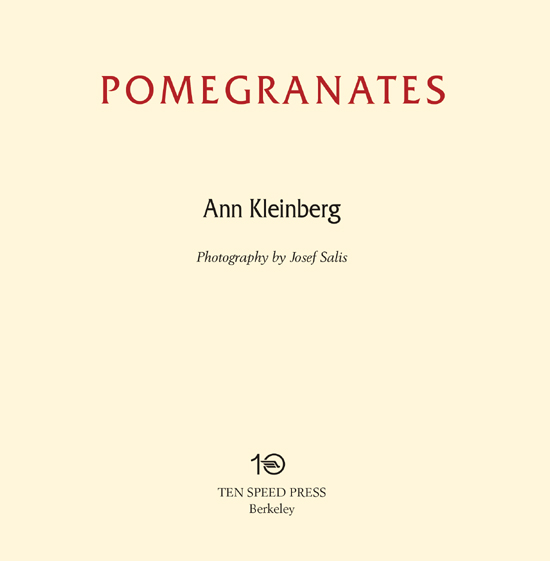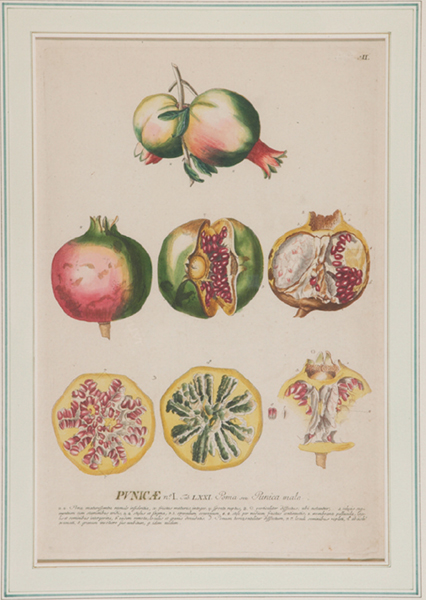Text and photographs copyright 2004 by Penn Publishing Ltd.
All rights reserved. Published in the United States by Ten Speed Press, an imprint of the Crown Publishing Group, a division of Random House, Inc., New York.
www.crownpublishing.com
www.tenspeed.com
Ten Speed Press and the Ten Speed Press colophon are registered trademarks of Random House, Inc.
Library of Congress Cataloging-in-Publication Data is on file with publisher
eISBN: 978-0-307-81607-8
Cover Design by Michel Opatowski
v3.1
Contents
Acknowledgments
T he writing of this book has led me on an incredible journeyto develop and compile a collection of recipes into a single-subject cookbook on pomegranates, a feat never before undertaken (to my knowledge). I was daunted, but determined. Once people got over the initial surprise (What could you possibly write about pomegranates?), they were incredibly helpful. Well, come to think of it, my grandmother used to make pomegranate juice, and she made us drink it to stay healthy. You know, I remember my aunt had a recipe in her tattered cookbook for chicken with pomegranates and walnuts. And so it flowed. And so flows my gratitudeas plentiful as the seeds of a pomegranate.
To Nizza Ben Shalom, my friend and culinary mentor, there are no words to express my appreciation. Without her enthusiasm and professional kitchen wisdom, this book might never have made it to the shelves. She tested, tasted, and tweaked from her restaurant Boccaccio in Tel Aviv to my kitchen in Caesareaalways inventing and suggesting. Her chef, Eran Drori, and her mother, Reena Ezra, also offered some of their cooking magic.
Linda Zaga, whose knowledge of Syrian cuisine is inspiring, transformed those pomegranate seeds into one incredible dish after another. Her pomegranate molasses is like no other I have ever tasted! Many thanks are due her and her daughter Sefi Kerem, who happily joined the project and translated her mothers just a handful into book-worthy measurements.
Eysar Horesh, my Persian food consultant, shared her cooking skills, provided critical tips, and kept me going when deadlines and pomegranate mania were about to take over. Gabriel Shachar, head chef of Jerusalems King David Hotel, whipped up some wonderful dishes as well as ideas, providing the perfect jump start.
To Shelley Goldman, who gave me my start in food writing and pushed me to keep going, I am eternally grateful. To Rachel and Elan Penn, my publishers, who were willing to take a chancewhat a pleasure it has been working with them. Thanks are also due Niv Agriculture and Kibbutz Gan Shmuel, who kept me in pomegranates when they had all but disappeared from the shelves.
There have been so many wonderful teachers, gifted authors, and talented chefs I have learned from and been inspired byeach has contributed to my love of preparing, eating, and writing about food.
To the friends who offered a recipe, lent a book, or just put up with my obsession with pomegranatesI am so very grateful. And most especially to the pome of my soulO.P. He encouraged the writing, sampled the food, and happily lived with this passion for pomegranates. Thank you from the bottom of my heart.
Ann Kleinberg
The Pomegranate
An Extraordinary Gift from Nature
T he pomegranateregal, luscious, and delicious. How does one introduce this extraordinary fruit and pay homage to its noble heritage? For this is no food of mere mortalsthis is a food of the gods, with a history resplendent in legend and lore.
The crown-topped pomegranate has suddenly become the darling of the Western dining table, its newfound popularity propelling it to celebrity status. Television has featured it (in lifestyle shows, cooking programs, and even a cameo appearance on Sex and the City ), the print media has devoured it (from Oprah Winfreys O to Time magazine), and chefs from the East Coast to the West are flavoring their foods with it. The pomegranate is the new food of the new millennium. Wouldnt King Tutan-khamen be having a good laugh over thishe was buried with pomegranates thousands of years ago!
The truth is, pomegranates have been around forever. The Old Testament, for instance, is rife with pomegranate referencesfrom allusions of love: Let us go early to the vineyards and if the pomegranates are in bloomthere I will give you my love (Song of Solomon 7:12), to symbols of ornament: On the capitals of both pillars were the two hundred pomegranates in rows all around (1 Kings 7:20), and imagery of hope: the Promised Land to which Moses led his people was said to be a land with wheat and barley, vines and fig trees, pomegranates, olive oil and honey (Deuteronomy 8:8).
Georg Wolffgang Knorr, etching on paper, 1751, private collection
And while we are on the subject of the Bible, can we even be sure that it was an apple with which Eve enticed Adam? Apparently not, because many scholars believe that the fruit of temptation, leading to banishment from the Garden of Eden, was none other than the pomegranate. What a juicy tidbit to consider!
The allure of the pomegranate has captured cultures throughout history, both real and imaginary. The ancient Egyptians included pomegranates in their tombs, to ensure safe passage to the next world and rebirth. Greek myth attributed the arrival of winter to Persephone and her inability to resist the luscious pomegranate. The Chinese gave wedding gifts with images of pomegranates to promote a fruitful union. Understandably, the round shape and myriad seeds have come to represent fertility and bounty. And to this day, Jews honor the fruit by including it in the festive meals associated with Rosh Hashanah, the Jewish New Year.
The pomegranate image has figured prominently in art throughout the ages. It appears in the paintings of artists as diverse as Caravaggio and John Singer Sargent. The religious imagery evoked by the fruit is significantBotticelli placed a pomegranate in the hand of baby Jesus in his painting Madonna of the Pomegranate (Uffizi Gallery, Florence), and the meaning of the bleeding pomegranate tree in the Unicorn Tapestries of the fifteenth century (Metropolitan Museum of Art at the Cloisters, New York) is still a debated topic.
The pomegranate is absolutely captivating. The fullness of its form, the leathery skin in shades of gold to burnished red, the crowned peak and hairy antennae hiding withinthe fruit seduces one to pick it up and caress it. Many admirers have been sufficiently mesmerized by the pomegranate to use it for ornament alone.
Beyond all the pomegranates glamour, and way beyond its current fifteen minutes of fame, the most important feature of this marvelous food is that it offers an oasis of health benefits. Results of ongoing medical research indicate evidence of significant antioxidant and antiviral activity. There is great hope that the inherent properties of the pomegranate may in the not-too-distant future be helpful in breast cancer treatment and hormone replacement therapy.
While folk medicine has long promoted the pomegranatefinding uses for the juice, seeds, and rind to treat illnesses ranging from sore throats to dysenterythe recent spate of attention has caused scientists to clear off their counters and bring on the pomegranates. Forget red wine and green teathe healthy benefits to the cardiovascular system from pomegranate juice far outweigh all the other drinks. Even the cosmetic industry has exploited the astringent properties of the pomegranate, using it in soaps, shampoos, body scrubs, and creams. And lest we forget, the pomegranate has often been thought of as an aphrodisiac.





